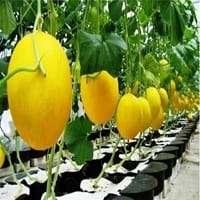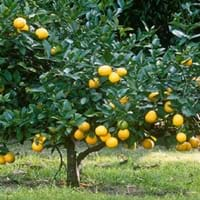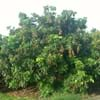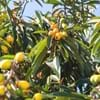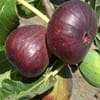Life Span
Annual or Biennial
Perennial
Types
Earlibrew, Honey King, Moonshine, Brilliance,Honey Chow
Avalon Lemon, Bears Lemon, Buddha's Hand, Bush Lemon, Citron
Habitat
Semi arid regions
Mixed deciduous forest, Tropical regions
USDA Hardiness Zone
Not Available
9-12
Sunset Zone
2a, 2b, 3a, 3b, 4, 5, 6, 7, 8, 9, 10, 11, 12, 13, 14, 15, 16, 17, 18, 19, 20, 21, 22, 23, 24
H1, H2, 8, 9, 12, 13, 14, 15, 16, 17, 18, 19, 20, 21, 22, 23, 24
Habit
Vining/Climbing
Oval or Rounded
Flower Color
Yellow
White
Flower Color Modifier
Bicolor
Bicolor
Fruit Color
White, Yellow, Salmon
Yellow, Lemon yellow
Leaf Color in Spring
Green
Green
Leaf Color in Summer
Dark Green
Green
Leaf Color in Fall
Dark Green
Green
Leaf Color in Winter
Light Green
Light Green
Leaf Shape
Heart-shaped
Oval
Plant Season
Summer, Fall
Spring, Summer, Fall, Winter
Sunlight
Full Sun
Full Sun, Partial Sun
Type of Soil
Loam
Loam, Sand
The pH of Soil
Neutral
Acidic, Neutral
Soil Drainage
Well drained
Well drained
Bloom Time
Indeterminate
Indeterminate
Tolerances
Drought
Drought
Where to Plant?
Container, Ground
Container, Ground
How to Plant?
Seedlings
Seedlings
Plant Maintenance
Medium
Medium
Watering Requirements
Reduce watering once fruit are growing, Requires a lot of watering, Requires consistently moist soil
Keep the ground moist but not water-logged, occasional watering once established
In Summer
Lots of watering
Lots of watering
In Spring
Moderate
Moderate
In Winter
Average Water
Average Water
Soil pH
Neutral
Acidic, Neutral
Soil Type
Loam
Loam, Sand
Soil Drainage Capacity
Well drained
Well drained
Sun Exposure
Full Sun
Full Sun, Partial Sun
Pruning
Remove damaged leaves, Remove dead branches, Remove dead leaves
Generally pruned to waist height, pruning needed for strong structure, Remove damaged leaves, Remove dead branches, Remove dead leaves
Fertilizers
All-Purpose Liquid Fertilizer
All-Purpose Liquid Fertilizer, Doesn't require fertilization when grown in rich soil
Pests and Diseases
Anthracnose, Aphids, Bacterial fruit blotch, Cucumber beetles, Downy mildew, Southern Bacterial Wilt, Spider mites
Aphids, Grasshoppers, Leafminers, Red blotch, Rust, Snails
Plant Tolerance
Drought
Drought, Drought and Salt
Flower Petal Number
Single
Single
Fragrant Bark/Stem
No
Yes
Foliage Texture
Coarse
Medium
Foliage Sheen
Matte
Glossy
Attracts
Not Available
Birds, Butterflies
Allergy
breathing problems, Cough, cramps, Diarrhea, Itchy eyes, Mouth itching, Nasal Congestion, Throat itching, wheezing
Diarrhea, Hyperacidity, Sore Throat, Whooping Cough
Aesthetic Uses
Not Used For Aesthetic Purpose
Cottage Garden
Beauty Benefits
Not Available
Glowing Skin, Maintains teeth healthy, Making cosmetics, Nourishes scalp, Perfumes, Skin inflammation
Environmental Uses
Air purification
Air purification, Fixes Nitrogen, Insect Repellent, soil stabilisation
Medicinal Uses
Potassium, Vitamin C
Acne, Antibacterial, Antirheumatic, Appetizer, Bone strength, Digestion problems, Hangover, Healthy teeth, Nutrients, Obesity, Oral health, Skin irritation
Part of Plant Used
Fruits, Leaves, Root, Seeds
Bark, Fruits, Leaf Stalks, Leaves
Other Uses
Added to salads, Used in tea, wine and sweet dishes, Used to flavour soups
Air freshner, Biomass for fuel, Can be made into a herbal tea, Leaves are used as mosquito repellent, Making Perfumes, Preferably used as black tea, Used as a nutritious food item
Used As Indoor Plant
No
No
Used As Outdoor Plant
Yes
Yes
Garden Design
Edible, Fruit / Fruit Tree, Herb / Vegetable, Vine
Container, Edible, Fruit / Fruit Tree, Hedges, Houseplant, Mixed Border, Topiary / Bonsai / Espalier, Tropical
Botanical Name
CUCUMIS melo 'Honey I Dew'
CITRUS limon
Common Name
Honey I Dew Honeydew, Honeydew
Lemon
In Hindi
खरबूज़ा [kharabooza]
नींबू
In German
Honigtau
Citrone or Limone or Zitrone
In French
Miellat
Citron or Citronnier
In Spanish
Gotas de miel
Limón or Limonero
In Greek
πεπόνι μελιτώματος [pepóni melitómatos]
Λεμόνι [Lemóni]
In Portuguese
melão de Honeydew
Limão
In Polish
melon spadzi
Cytrynowy
Phylum
Magnoliophyta
Magnoliophyta
Class
Magnoliopsida
Magnoliopsida
Order
Cucurbitales
Sapindales
Family
Cucurbitaceae
Rutaceae
Clade
Not Available
Rosids
Tribe
Not Available
Not Available
Subfamily
Not Available
Not Available
Number of Species
Not Available
Importance of Honeydew and Lemon
Want to have the most appropriate plant for your garden? You might want to know the importance of Honeydew and Lemon. Basically, these two plants vary in many aspects. Compare Honeydew and Lemon as they differ in many characteristics such as their life, care, benefits, facts, etc. Every gardener must at least have the slightest clue about the plants he wants to plant in his garden. Compare their benefits, which differ in many ways like facts and uses. The medicinal use of Honeydew is Potassium and Vitamin C whereas of Lemon is Acne, Antibacterial, Antirheumatic, Appetizer, Bone strength, Digestion problems, Hangover, Healthy teeth, Nutrients, Obesity, Oral health and Skin irritation. Honeydew has beauty benefits as follows: Not Available while Lemon has beauty benefits as follows: Not Available.
Compare Facts of Honeydew vs Lemon
How to choose the best garden plant for your garden depending upon its facts? Here garden plant comparison will help you to solve this query. Compare the facts of Honeydew vs Lemon and know which one to choose. As garden plants have benefits and other uses, allergy is also a major drawback of plants for some people. Allergic reactions of Honeydew are breathing problems, Cough, cramps, Diarrhea, Itchy eyes, Mouth itching, Nasal Congestion, Throat itching and wheezing whereas of Lemon have Diarrhea, Hyperacidity, Sore Throat and Whooping Cough respectively. Having a fruit bearing plant in your garden can be a plus point of your garden. Honeydew has showy fruits and Lemon has showy fruits. Also Honeydew is not flowering and Lemon is not flowering . You can compare Honeydew and Lemon facts and facts of other plants too.
